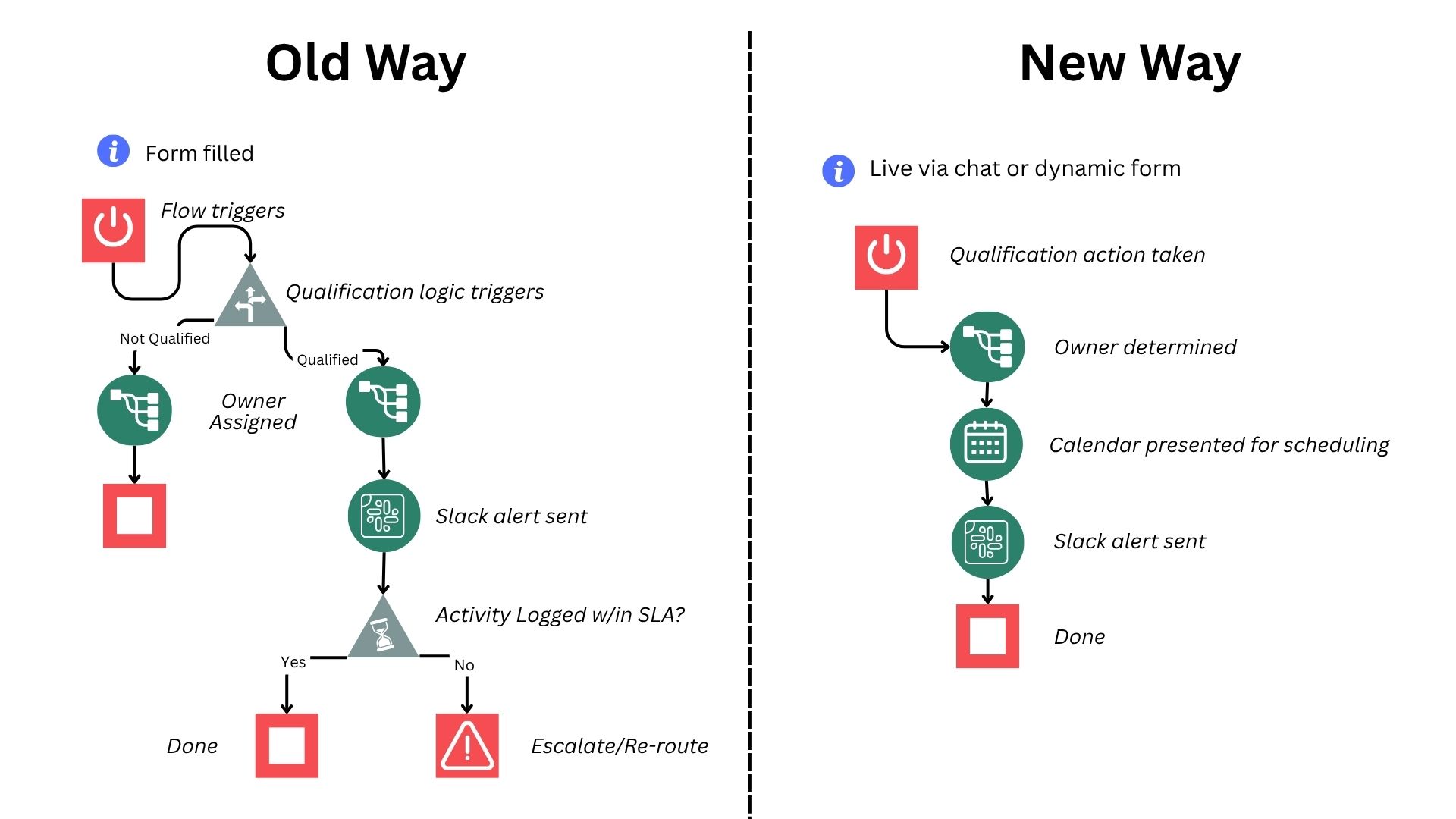

This post is part of a sponsored series with our friends at RevenueHero.
Remember when you said your lead routing setup was just a temporary patch?
Yeah. Neither do we. (Three, maybe four years ago? Be honest.)
It’s time to dust off that logic and give it a long, hard stare—because chances are, high-intent leads are slipping through the cracks. What was “good enough for now” doesn’t cut it when someone’s staring at your pricing page, waiting for a follow-up.
If you’re still relying on manual hand-offs, outdated territory logic, or lop-sided round-robins, you’re not just risking delays—you’re leaking pipeline.
And if you’re in RevOps? That’s your mess to clean up.
It’s easy to blame SDRs for slow follow-up. But let’s be real (#hardtruth): that’s on us, RevOps.
Humans take the path of least resistance. If your routing process isn’t aligned with how people actually behave, it won’t stick. It’s on us to create processes that work with human nature—not against it.
Here’s what to evaluate:
Now’s the time to:

Also: think about re-engagement.
What if a previously qualified lead disengages and comes back through a webinar?
What if a customer submits a new demo request?
These scenarios don’t have obvious answers—and they require cross-functional input.
If your CRM supports both a Lead object and a Contact object, congrats—you’ve inherited an identity crisis.
At RevOpsAF, Ross Graber of Forrester reminded everyone that the buyer journey isn’t linear anymore. People weave in and out of engagement. They interact with sales, bounce, then resurface through marketing content, events, or support.
Clinging to “Leads = pre-sales” and “Contacts = post-sales” doesn’t reflect reality—and in account-based setups, it makes routing even messier.
We’re not saying ditch the Lead object altogether. But:

These decisions ripple through your tech stack—especially when it comes to routing.
Before implementing anything new, figure out what’s broken.
Ask yourself:
You might discover:
Don’t have the reporting to answer these questions? That’s a problem. Set benchmarks, configure your campaign and lifecycle stages properly, and build dashboards to track lead flow.
Need a benchmark? Here’s how top SaaS teams do it in under 60 seconds.
Manual lead hand-offs are a ticking time bomb. That sales manager who swears they’ll review overflow leads? They won’t.
Your routing logic should do the heavy lifting. Let’s talk smarter automation:
Yes, you can hack a lot of this in flows… but should you? If your logic takes minutes to run, leads are being lost. Time for a real-time upgrade.

Real-time routing platforms like RevenueHero can combine these rule types and trigger automated meeting scheduling within seconds.
Even the best routing tech can’t solve everything. If your reps:
Then the problem isn’t just routing—it’s accountability.
Set up alerts. Track SLAs. Build dashboards that make lead follow-up (or lack thereof) painfully visible. While we’d love to solve everything with technology, sometimes fixing the problem means having hard conversations with managers.
RevOps isn’t just about automation—it’s about transparency and truth telling.
It’s a revenue multiplier.
Every minute a qualified lead waits is a minute they might choose your competitor instead. As a RevOps leader, it’s your job to make sure that never happens.
Here’s the play:
And if you want to go deeper, this guide from RevenueHero is a solid next step.
Let’s stop leaking pipeline—one intelligently routed lead at a time.
